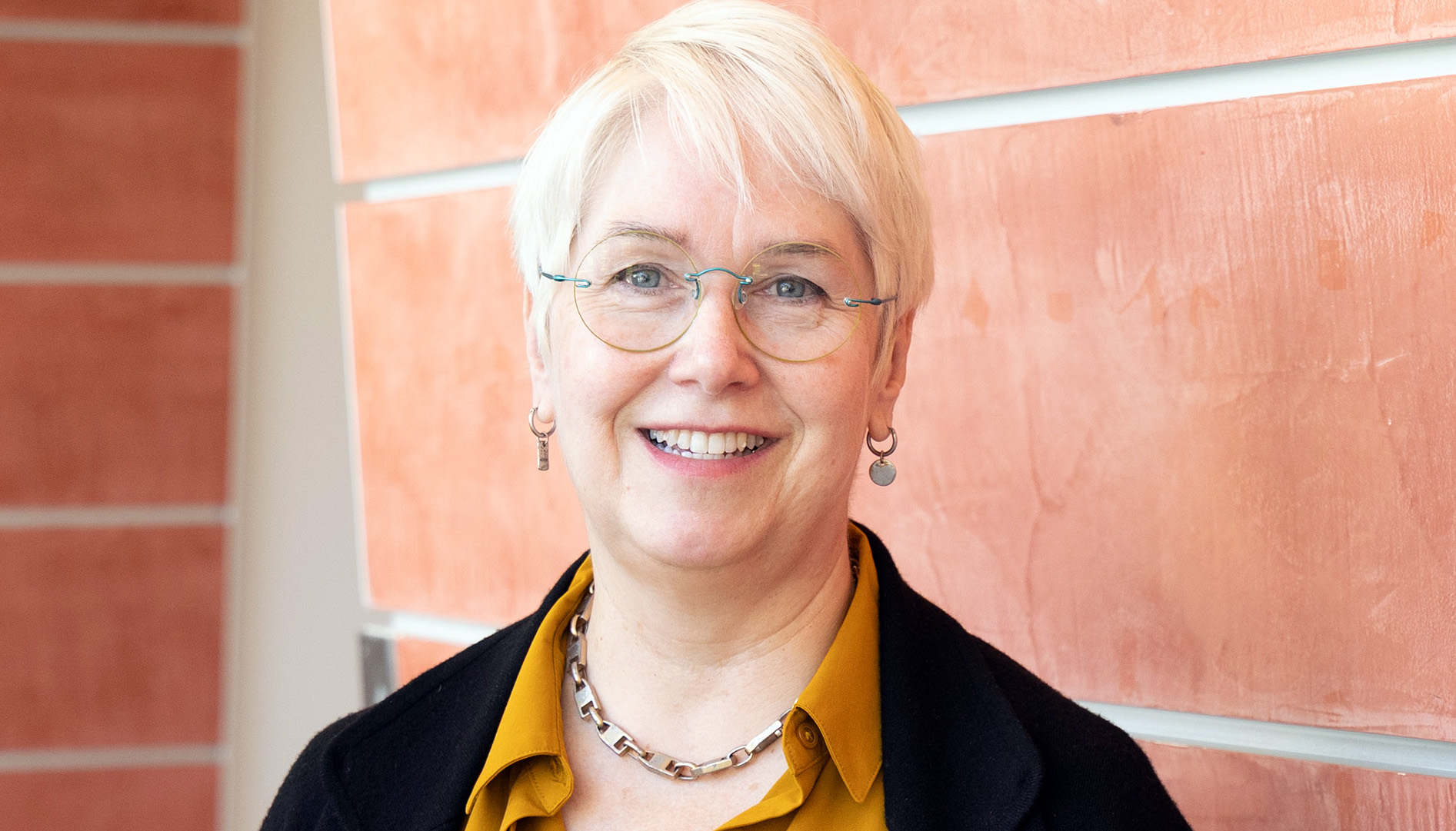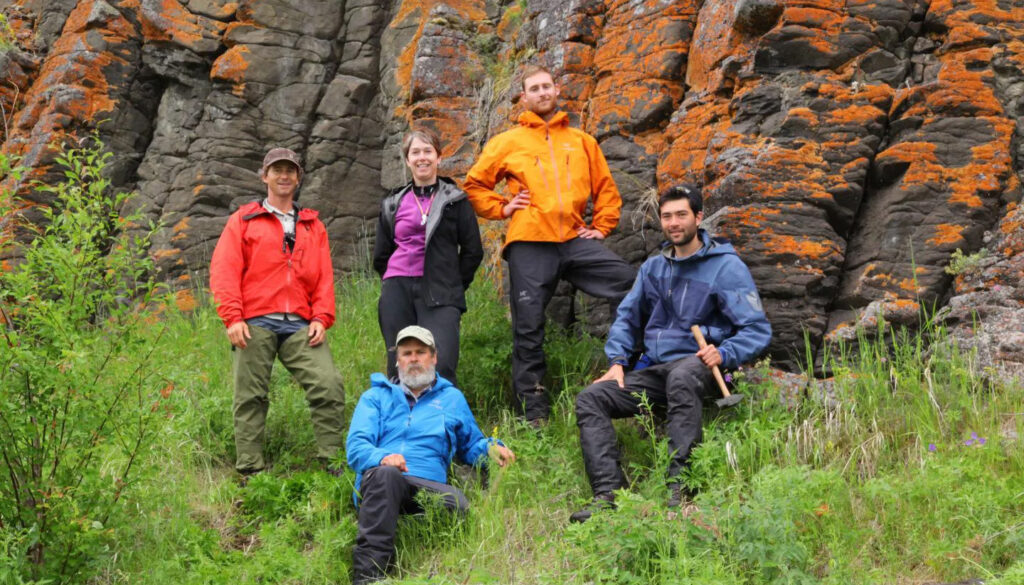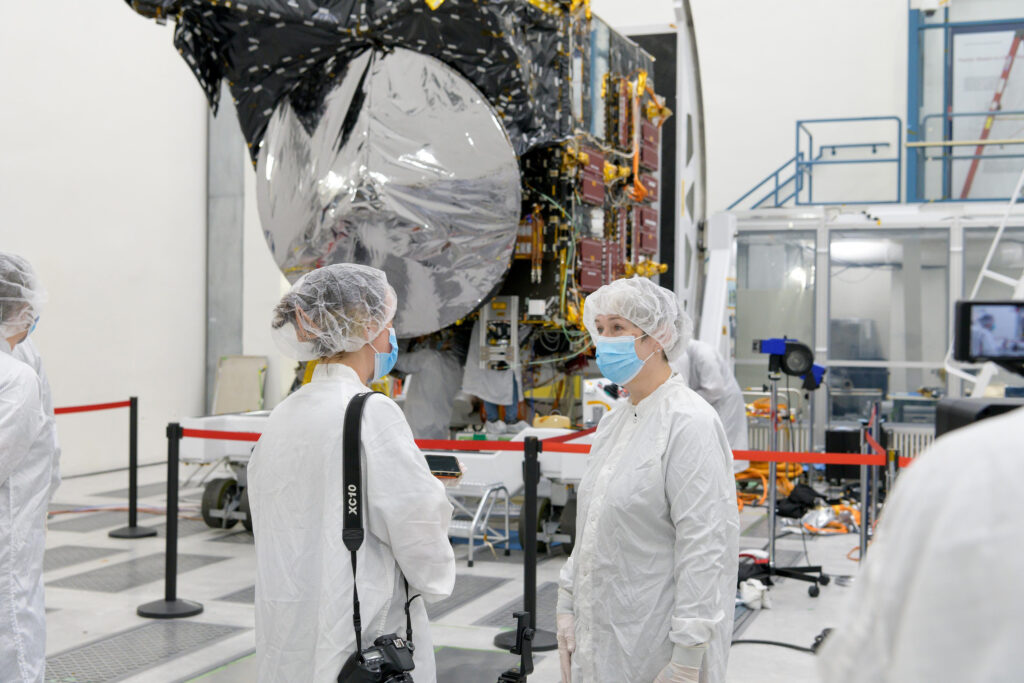Planetary scientist Lindy Elkins-Tanton to head Space Sciences Laboratory
A professor at Arizona State University, she leads NASA's Psyche mission, the first to explore a metallic asteroid.

Alan Toth, UC Berkeley
May 6, 2025
Lindy Elkins-Tanton, a planetary scientist from Arizona State University (ASU) who currently leads a $1.2 billion NASA mission to explore an asteroid called Psyche, has been chosen as the new director of the University of California, Berkeley’s Space Sciences Laboratory (SSL).
Elkins-Tanton comes with two decades of leadership experience, including three years as director of the Department of Terrestrial Magnetism at the Carnegie Institution for Science in Washington, D.C., and then five years as director of the School of Earth and Space Exploration at ASU. Since 2011, she has been the principal investigator of the Psyche mission, which was funded by NASA to explore an asteroid from our solar system’s main asteroid belt — the first exploratory mission to an asteroid that is primarily made of metal. That spacecraft is now cruising to an arrival in 2029.
“I am thrilled that Lindy Elkins-Tanton will join Berkeley’s Space Sciences Lab in July. She is an outstanding scientist and public science leader,” said Katherine Yelick, UC Berkeley’s vice chancellor for research. “Her experience leading interdisciplinary science and technology teams will build on the strengths of the Space Sciences Lab and enable new opportunities for SSL, and for Berkeley as a whole.”
A member of the National Academy of Sciences, Elkins-Tanton is currently a Regents and Foundation Professor for the State of Arizona at ASU and, until recently, vice president of the university’s Interplanetary Initiative. She will assume the SSL directorship on July 1 and become a UC Berkeley professor of earth and planetary science.
“Lindy Elkins-Tanton is an outstanding scientist who is also a proven leader in space science. We are tremendously lucky that she is eager to join us as the new director of the Space Sciences Laboratory,” said Steven Kahn, dean of mathematics and physical sciences in UC Berkeley’s College of Letters and Science and a professor of physics. “This will be the first time that SSL will be led by a faculty member in the Department of Earth and Planetary Science.”
One attraction for Elkins-Tanton, she said, is that “SSL is special. There are very, very few universities that can actually build and fly space instruments, and fewer still that also have flight software and mission control and thus can manage whole missions, soup to nuts. Being able to do that at university prices instead of NASA prices is a strength. All of this puts SSL in a very small, elite group.”
Established in 1959, SSL has participated in over 50 NASA space science missions, including the Apollo, Mars and Explorer programs, and many international space missions. Researchers at SSL have pioneered the development of instrumentation to study the sun, the interplanetary medium, the planets and Earth, and for measuring the cosmic microwave background. Currently, SSL has about 400 employees working on dozens of instruments for future spacecraft. It is also mission control for the NASA-funded missions THEMIS/ARTEMIS and NuStar and, soon, the Carruthers Geocorona Observatory, ESCAPADE, COSI, MUSE and UVEX.
Elkins-Tanton will succeed Stuart Bale, who is serving as interim director and led the lab between 2008 and 2018. A UC Berkeley professor of physics, he is the principal investigator for one of the main scientific instruments aboard NASA’s Parker Solar Probe, which is exploring the sun’s atmosphere, and is designing and building two upcoming lunar missions: LuSEE “Lite,” which will land near the moon’s south pole, and LuSEE “Night,” which will land on the moon’s far side. The missions’ acronyms are short for Lunar Surface Electromagnetics Experiment.
“We’re very excited for Lindy to join SSL,” Bale said. “She’s a terrific scientist and a smart and energetic leader. SSL has a brilliant future ahead, and we’re eager for Lindy to take the helm.”
From flood basalts to planetesimals
Elkins-Tanton received her B.S. (1987) and Ph.D. (2002) in geology and geophysics from the Massachusetts Institute of Technology (MIT) and worked for a decade on ancient lava flows in Siberia called the Siberian Traps — extensive flood basalts that erupted 250 million years ago and triggered the mass extinction at the end of the Permian period. She and her colleagues helped clarify the climatic conditions resulting from these long-term lava eruptions, as well as the timing and volume of the eruptions.

Scott Simper
She served as a research associate at Brown University before being appointed an assistant professor of geology at MIT in 2007, during which time she wrote a paper with MIT colleagues Ben Weiss and Maria Zuber about the origins of a famous meteorite, Allende, discovered in Mexico in the 1960s. Their proposal — that Allende came from the outer layer of a large asteroid that had a magnetic inner core of molten metal — eventually spawned a collaboration with scientists at the Jet Propulsion Laboratory (JPL) in Pasadena to design a space mission to explore the structure and formation of a large asteroid, or planetesimal.
In 2011, Elkins-Tanton, Zuber, Weiss and their JPL colleagues formally proposed that NASA fund a mission to a likely metallic asteroid, Psyche, which would be our first encounter with an asteroid that possibly came from the metal core of a planetesimal. Psyche is about the size of Switzerland and is located in the main asteroid belt between Mars and Jupiter, which contains millions of small and large objects left over from the solar system’s formation.
“We can never ever get to the core of any of our rocky planets — it’s way too hot and too high pressure. Yet, it is where these planets’ magnetic fields come from. These magnetic fields play a role in habitability and retention and loss of the atmosphere, very important things that have to do with life on our rocky planet,” Elkins-Tanton said. “The Psyche mission ended up being, ‘Let’s go try to see a metal core the only way that humans ever can.'”
That same year, she moved to the Carnegie Institution and, in 2014, to ASU, at which point NASA agreed to fund the mission. Working seven days a week for years, she and the Psyche team designed, built and launched the mission in 2023. At UC Berkeley, she will devote time to managing the mission while running SSL and teaching a few courses in the earth and planetary science department.
Building teams
Elkins-Tanton’s years of leading the Psyche mission and departments at the Carnegie Institution and ASU have given her an opportunity to see which styles of team management work and which don’t. In fact, she said she has written a book about “the art and science of exceptional teams,” which will come out early next year.

NASA JPL-Caltech, 2022
“I really care about how teams work,” she said, “where the success of a team is not just the success of the project, but also the success of every person on the project. Especially in space exploration, it can only be done all together.”
She also has been involved with administrative planning for the Perseverance Rover, which is now exploring the surface of Mars, lunar seismic networks and Venus exploration, and is now co-chair of a National Academy of Sciences panel recommending the science humans should prioritize when they first set foot on Mars. That consensus report is due to be completed this fall.
Elkins-Tanton hopes these team management skills will come in handy at SSL, where most of the projects are driven by independent principal investigators leading small teams.
“I’m there to help them and support them from an organizational point of view,” she said. “I surely hope that today’s science climate remains favorable for this kind of work and that I’ll be able to help attract projects to SSL, make connections for existing teams for the kinds of resources that they need, and advocate for the lab.”
Cuts to federal funding are already proposed for space missions involving planetary science, space physics and astrophysics — the science side of space exploration in which SSL excels, she said, adding, “We’re going to have to weather that.”
Elkins-Tanton has also had a long interest in science education, and even founded a company, Beagle Learning, with her husband, James Tanton, and son, Turner Bohlen, that was one of the few all-online educational platforms focused on student-directed learning, what’s called open inquiry. Now a website devoted to helping people plan their personal “passion projects” and teachers plan classroom projects, she said, she used it as inspiration for her own passion project: creating a new major at ASU that brings together students from all disciplines to think about positive human space futures, a project ASU’s president dubbed the Interplanetary Initiative.
“I got to invent a new undergraduate degree called technological leadership,” she said. “I’d been thinking about education for decades and had a lot of ideas about how to make it work. Now, we have 107 majors in this degree, which is designed to prepare students to work in teams, identify and solve problems and learn on their own.”
She also created a “Big Questions” process designed to accelerate innovation around humanity’s future in space by employing a new way to build interdisciplinary teams, based on her long experience building teams for NASA missions. The program seed-funds research projects — 45 to date — and has achieved a sixfold return on this seed money.
“I would love to work on these inquiry projects at Berkeley. It’s so powerful and rewarding,” she said.
In 2022, Elkins-Tanton published a memoir, A Portrait of the Scientist as a Young Woman, that, as she steps into a new phase of her career, may need a sequel.
“I am really excited about joining this just thriving intellectual community and being able to spend time with people who are interested in everything under the sun,” she said. “SSL is an amazing place that has got such a history of profound science. I’m hoping that I can support it through its next steps.”